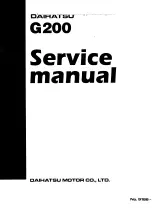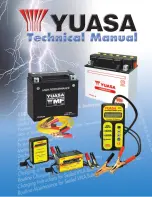
Do not solely rely on the brake lining wear sensor.
It is also strongly recommended that you have the
brake linings checked at a qualified specialist
workshop, not only at every service displayed by
the maintenance interval display, but also prior to
long journeys and whenever the wheels are
removed.
In the following situations, check the brake linings:
R
at every service according to maintenance
interval
R
before long journeys
R
every time a tire is replaced
R
during regular visual inspections for your own
safety
New brake disks and brake linings
New brake linings and brake disks only reach their
optimal braking effect after a few hundred miles (a
few hundred kilometers).
Until then, compensate for the reduced braking
effect by applying greater pressure to the brake
pedal. For safety reasons, Mercedes-Benz recom-
mends that you only have brake linings and brake
disks which are approved by Mercedes-Benz instal-
led on your vehicle.
Other brake disks or brake linings may compro-
mise the safety of your vehicle.
Always replace all brake disks and brake linings on
an axle at the same time. Always install new brake
linings when replacing brake disks.
Vehicles with a manual parking brake
&
WARNING Risk of skidding or an accident
by braking with the parking brake
If you have to brake your vehicle with the park-
ing brake, the braking distance is considerably
longer and the wheels may lock. There is an
increased risk of skidding and/or accident.
#
Only brake the vehicle with the parking
brake if the service brake has failed.
#
In this case, do not apply the parking
brake with too much force.
#
If the wheels lock, immediately release
the parking brake as much as required
for the wheels to turn again.
When driving on wet roads or dirt-covered surfa-
ces, road salt or dirt may get into the parking
brake. This causes corrosion and a reduction of
braking force.
In order to prevent this, drive with the parking
brake lightly applied from time to time.
When doing so, drive for a distance of approx-
imately 300 ft at a maximum speed of 13 mph
(20 km/h).
The brake lights do not light up when you brake the
vehicle with the parking brake.
Information about driving on wet roads
Hydroplaning
&
WARNING Risk of aquaplaning because
tire tread is too low
Depending on the depth of the water on the
roadway, aquaplaning can occur despite suffi-
cient tire tread depth and low speed.
#
Avoid tire ruts and brake carefully.
Therefore, in heavy rain or other conditions in
which hydroplaning can occur, drive as follows:
R
Reduce your speed
R
Avoid tire ruts
R
Brake carefully
Driving on flooded roads
Bear in mind that vehicles traveling in front or in
the opposite direction create waves. This may
cause the maximum permissible depth of water to
be exceeded. These notes must be observed under
all circumstances. Otherwise, you can damage the
engine, electrics and transmission.
If you have to drive on stretches of road on which
water has collected, please bear in mind the fol-
lowing:
R
The water level of standing water may not be
above the lower edge of the front bumper.
R
You may drive no faster than walking pace.
Observe the notes on fording while off-road for all-
wheel drive vehicles (
/
page 116).
Information about driving in winter
&
DANGER Risk of fatal injury due to poison-
ous exhaust gases
If the tailpipe is blocked or sufficient ventilation
is not possible, poisonous exhaust gases such
as carbon monoxide may enter the vehicle.
This is the case when the vehicle becomes
stuck in snow, for example.
Driving and parking 115
















































